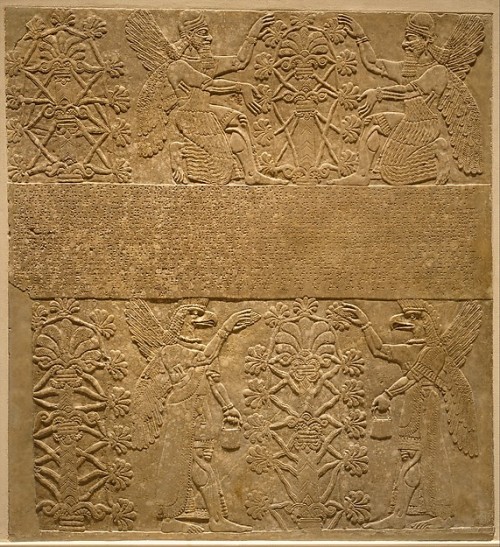Correspondences Between Apkallu and the Nephilim
by Estéban Trujillo de Gutiérrez
“Mesopotamian literature provides some interesting glimpses into the conceptual background of Genesis 6:1-4. The most notable case is the famous hero Gilgamesh. As a great warrior-king, he would certainly fit the epithets “ancient warrior” and “man of renown.”
In the Gilgamesh Epic we are told that “two-thirds of him is god and one-third of him is human” (I.46 and IX.31), the son of the goddess Ninsun and the human king Lugalbanda. In this ancestry we see a divine / human marriage and the birth of a semi divine child.
There is also a pivotal scene in the Gilgamesh epic where the goddess Ishtar sees that Gilgamesh is beautiful and desires to marry him–but Gilgamesh refuses Ishtar’s advances (VI.5-80). Here is almost another divine / human marriage, again with a divine woman and a mortal man. The motif of Gilgamesh’s semi divine identity likely stems from the ideology of kingship in Mesopotamia, in which the king is often depicted as quasi-divine, sealed with greatness by the gods at birth.
For example, the Tukulti Ninurta Epic describes the Assyrian king as “the flesh of the gods” (šēr ilāni), the same phrase used to describe Gilgamesh in Gilgamesh IX.53. Royalty is rounded with divinity in Mesopotamian political ideology, as it is elsewhere in the ancient Near East.

In the top register, ummianu, postdiluvian apkallu, tend to a sacred tree, In the lower register, antediluvian apkallu tend to a sacred tree.
The pinecones and buckets in their hands are now understood to be standard devices used to sprinkle water in blessing.
It is entirely possible that the unknown legends of the Nephilim have something to do with stories of such ancient semi divine warrior kings. Another relevant example, mediating between Mesopotamian and biblical traditions, is Nimrod (Genesis 10:8-12; J), a mighty hunter and king of Babylon and Assyria.
A.D. Kilmer has suggested that the ancient sages of Mesopotamian tradition–the apkallu–may be related to the Nephilim. The grounds for this suggestion are the following: the apkallu lived immediately before and after the flood; some of the post-diluvian apkallu are described as angering various gods; and some apkallu are “of human descent,” one of them being only two-thirds apkallu. A Late Babylonian list of the apkallu alludes to several unknown episodes about the postdiluvian apkallu:
- Nungalpiriggaldim–who brought down Ishtar from heaven and who made the harp decorated with bronze and lapis.
- Piriggalnungal–who angered Adad
- Piriggalabsu–who angered Ea
- Lu-Nanna, only two-thirds apkallu–who drove the dragon from Ishtar’s temple
- [total of ] four of human descent whom Ea endowed with comprehensive intelligence.
Of the apkallu before the flood, only Adapa can be said to have angered the gods, since Anu calls him to task for breaking the wing of the south wind.
The transgressions of the apkallu are intriguing, particularly those “of human descent.” Yet it is hard to see how these figures can be directly related to the Nephilim, since their identities and attributes are so different: the apkallu are ancient sages and culture heros, while the Nephilim are ancient warriors and giants.
It is plausible, as H.S. Kvanvig has argued, that tales of the apkallu became mixed with interpretations of the Sons of God and the Nephilim in post-exilic times, for in I Enoch and later texts the heavenly beings (the “Watchers”) that come to earth to marry human women are also culture heroes, teaching arts and sciences to their human wives. Adding to this possibility of influence are indications that parts of I Enoch are of Mesopotamian provenance.”
Ronald Hendel, “The Nephilim Were on the Earth: Genesis 6:1-4 and its Ancient Near Eastern Context,” in Christoph Auffarth and Loren T. Stuckenbruck, eds., The Fall of the Angels, Brill, 2004, pp. 27-9.


The watchers and their Nephilim offspring are absolutely real. Nephilim were giants and there’s been many of them unearthed. There is a cover up to protect the false paradigm of the religion called evolution/Darwinianism. But there is a coming return of these abominations and it will be just “as in the days of Noah”. We already see this in the unapologetic sinning and immorality of man but there are those who are working to bring back the genetic abominations which means they are in league with the fallen angels and evil spirits that were Nephilim.
LikeLiked by 1 person